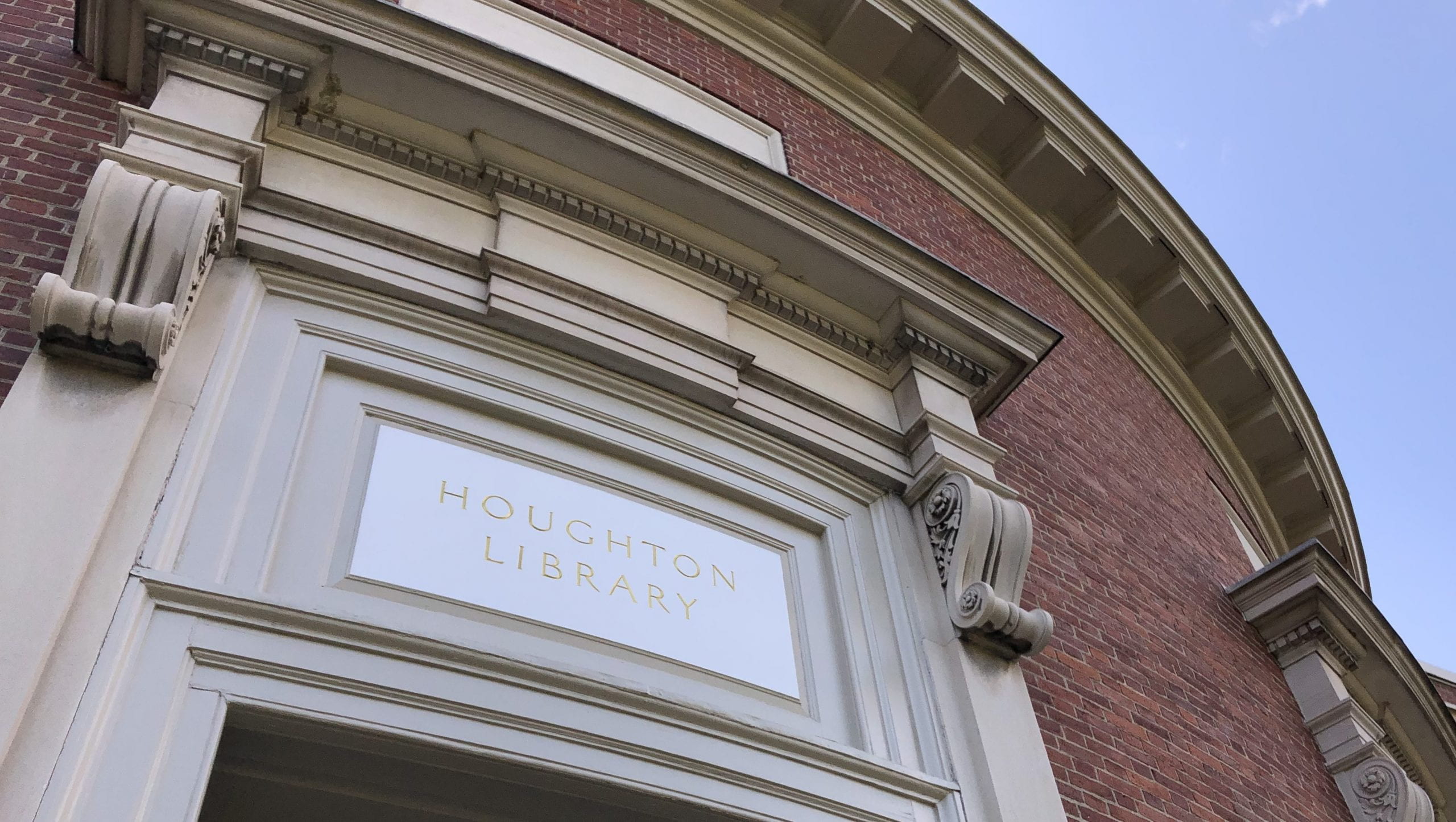By Michael Austin, Manuscript Cataloger, Houghton Library
For this fourth installment of posts on the Castañé collection of material related to conflicts of the 20th century, held by Houghton Library, I wanted to wrap up our survey of items from the era of the Second World War as shown in parts One, Two, and Three. The collection is incredibly rich in documents, photographs, and objects from this time period, and it would be no difficult matter to run a series of a dozen posts or more on them alone. However, other conflicts—notably the First World War, the Spanish Civil War, and the Korean War—are also represented, and I intend to comment on items generated during those as well. But as we come to the midway point in this series, I thought an overview of some seemingly disparate items would punctuate our journey through the last century’s most profound cataclysm.
If there has been one lesson that’s been driven home to me as I’ve cataloged these materials and reviewed them for these posts, it is that one constant in history is ambiguity, even though it often takes a very uncomplicated view. When the United States entered the Second World War, its involvement was couched in terms of moral obligation. The losses it and its allies suffered and the extraordinary acts of heroism performed by the armed forces have, over time, become the principal way the war has been memorialized. In the annals of US history, the war was a just, “good” war, with lines clearly drawn in terms of opponents, aims, and results. In fact, as with all human activity, these categories were constantly shifting; the items that I’ve selected to highlight will, I hope, illustrate this reality. The pairs of images that follow illustrate how perceptions and perspectives changed, sometimes abruptly and often radically.

Describing a German officer’s photo album in an earlier post, I wrote how the Nazis pushed into Ukraine in the early 1940s, and how in many cases they were greeted as liberators from Soviet oppression. The first item displayed here is a piece of pro-German propaganda, a poster with text translated loosely as follows: “Ukrainians! Recognize [Soviet] spies [and] partisans. In this way you’ll improve your life.” The top figure is a Ukrainian nationalist, depicted crushing a Soviet soldier, a Communist party functionary, and a caricature of a Jew—a symbol of Bolshevism and “rootless cosmopolitanism.”

The line between friend and foe could be changeable on the American side as well, as historical circumstances dictated. For example, the notion that the US had been implacably opposed to Nazi Germany since Hitler rose to power in 1933 is a figment of cultural amnesia. In fact, at this time a sizeable segment of the American population either actively supported Hitler’s policies or were indifferent to them; furthermore, memories of the horrors of the First World War were still fresh, and many dreaded being dragged into another European conflict. Thus, there was strong agitation for neutrality in the US as Germany inched ever closer to a conflagration with its neighbors, as shown by these political-action buttons from 1939.

The attack on the naval base at Pearl Harbor, Hawaii in December 1941 unified the US against Japan. As a result, Nazi Germany—Japan’s ally under the Tripartite Pact—declared war on the US, thereby mooting any domestic debate regarding entry into the conflict.
However, the United States found ways to make use of Nazis who fell under its sway. Consider the case of Wernher von Braun, shown in this photo circa 1950. Braun, a German rocket scientist who invented the V-2 rocket that wreaked much havoc in Britain and Belgium, was a committed Nazi and SS member. When captured by American forces in May 1945, he lied about his place and connections in the German bureaucracy. The Americans quickly discovered who and what he was, but he was nevertheless deemed an asset and spirited to the US to help develop rockets for the military and the space race against the Soviets. It seems that America was more than happy to employ Nazis—even those as deeply compromised as von Braun—when it was advantageous to do so.


Contrast this with a photograph from New York in 1951 showing protestors demonstrating against a visit by Soviet foreign minister Andrei Gromyko. Throughout the war the Soviets had been popularly depicted as America’s staunchest friends in the battle against fascism, but by this point the Cold War was in full swing, and the notion of an American communist party running in an election at any level of government would have been inconceivable. What a difference a war and 15 years make…

Ambiguity, then: ambiguity in regard to ethics, and ambiguity surrounding agendas, both hidden and stated. Ethics, it would appear, are frequently situational; we rationalize them to suit ourselves or those in power.
In closing this section of the blog series relating to the Second World War, I reiterate that I have purposely chosen to focus on the small, the quotidian, the mundane—in short, items that many readers might consider unremarkable. I’ve done this in order to highlight the heroism and suffering of the everyday citizens, warriors, and victims involved in the conflict—on both sides—and to show that the political and military leaders were, at bottom, normal people who had been tasked with responsibilities of world-historical importance by virtue of the positions into which destiny had placed them.
Editor’s note: The Castañé collection contains thousands of items, many unpublished, that will reward researchers who delve into it. Although the reading room at Houghton Library is currently closed, we maintain a page to introduce interested parties to the collection’s breadth. Additionally, some of the images have been digitized and can be viewed from anywhere, such as these from the general collection (MS Span 185).
